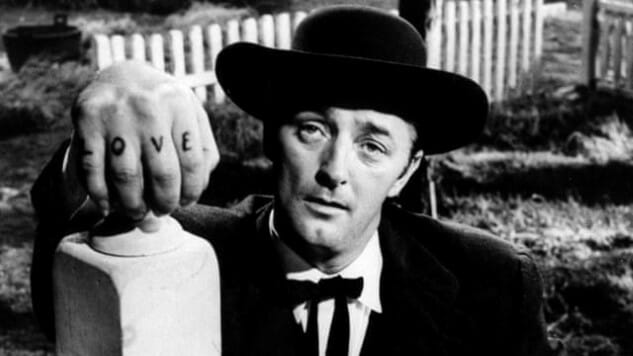The Best Horror Movie of 1955: The Night of the Hunter

This post is part of Paste’s Century of Terror project, a countdown of the 100 best horror films of the last 100 years, culminating on Halloween. You can see the full list in the master document, which will collect each year’s individual film entry as it is posted.
The Year
The film industry’s horror output has definitely improved for the better by the time we reach 1955, a year that is toplined by two classics that could easily headline almost any year of this list—provided you categorize either as horror, of course. The Night of the Hunter is a grim American fairy tale with ethereal cinematography, grossly misunderstood in its initial release, while Henri-Georges Clouzot’s Les Diaboliques is a pitch-perfect, pulpy murder mystery that presaged the coming era of giallo and slasher films in many ways. We ultimately chose Night of the Hunter, but here’s some additional words on Les Diaboliques, which you should absolutely watch, from Paste’s own Dom Sinacola:
Watching Les Diaboliques through the lens of the modern horror film, especially the slasher flick—replete with un-killable villain (check); ever-looming jump scares (check); and a “final girl” of sorts (check?)—one would not have to squint too hard to see a new genre coming into being. You could even make a case for Clouzot’s canonization in horror, but to take the film on only those terms would miss just how masterfully the iconic French director could wield tension. Nothing about Les Diaboliques dips into the scummy waters of cheap thrills.
The rest of the year feels extremely “1950s” in its output, as it probably should: We’re smack in the middle of the decade. Giant monster movies like Tarantula are running amok, with more excellent Harryhausen stop-motion animation in It Came From Beneath the Sea, in which a giant octopus at one point destroys the Golden Gate Bridge. Additional sci-fi horror films from this year include The Quatermass Xperiment, which is considered the birth of the British horror revival at Hammer Film Productions, and the lush but cheesy This Island Earth, which would go on to be the main course featured in the theatrically released MST3K: The Movie, 41 years later.
Beyond that, there’s still a plethora of others one could mention, from Abbott and Costello Meet the Mummy to Universal’s Revenge of the Creature and the first Godzilla sequel, Godzilla Raids Again. Truly, it feels good to put the lean years of the late 1940s and early 1950s behind us.
1955 Honorable Mentions: Diabolique, Tarantula, It Came From Beneath the Sea, The Quatermass Xperiment, Dementia, This Island Earth
-

-

-

-

-

-

-

-

-

-

-

-

-

-

-

-

-

-

-

-

-

-

-

-

-

-

-

-

-

-

-

-

-

-

-

-

-

-

-

-








































